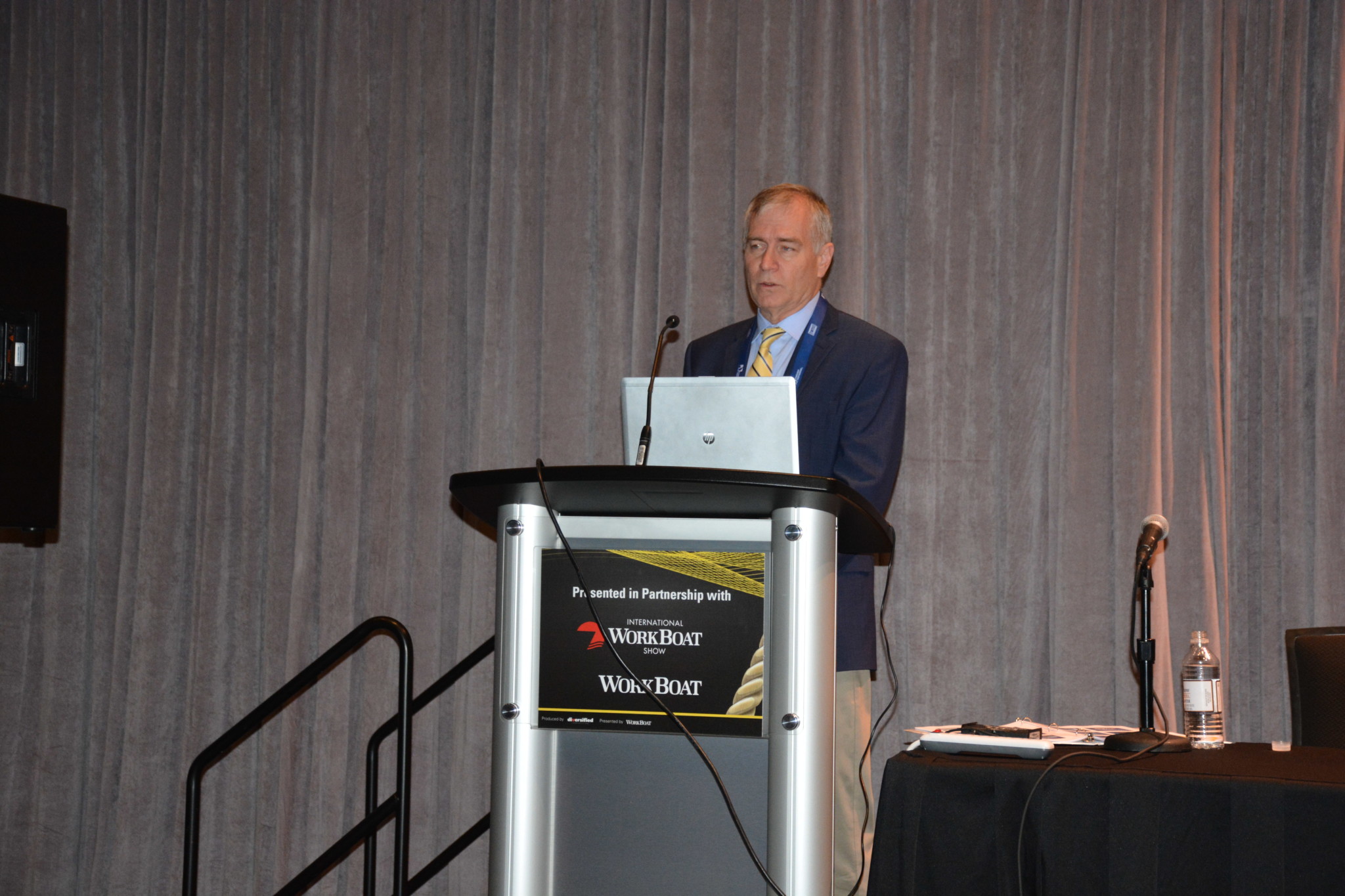Brian Curtis, the director of the Office of Marine Safety at the National Transportation Safety Board (NTSB), is a man on a mission. His job is to investigate marine accidents. His goal, he told the audience at Inland Waterways and Passenger Vessel Conference at the International WorkBoat Show in New Orleans Thursday morning, is to make the industry safer. “The idea of our investigations is to gather facts, make recommendations to effect change and try to make sure things don’t happen again.”
Marine Safety, the smallest unit in the NTSB, works 24/7 with a staff of 12 investigators to study and analyze accidents with more $500,000 in damages, six or more fatalities, or the loss of mechanically propelled vessels over 100 gross tons, as well as accidents between U.S. government-owned and privately-owned vessels with more than $75,000 in damages or one or more fatalities.
The agency has a lot on its plate right now with 50 pending reports and investigations, including:
- the 2017 USS Fitzgerald collision in in Japan that killed seven sailors,
- the July 2018 sinking of Stretch Duck 7 in Branson, Mo., that left 17 dead,
- the September fire aboard the dive boat Conception in Santa Barbara, Calif., where 34 people died, which, Curtis believes, is the worst passenger vessel fatality incident since the early 1950s,
- the puzzling September capsizing of the cargo ship Golden Ray off Brunswick, Ga. “We want to learn how this vessel wound up on its side while taking a 20-degree turn while going five knots,” Curtis explained.
Towing vessel casualties typically make up 50% of the caseload, with fishing vessels representing 15%, small passenger vessels and ferries at 8%, and other vessels at less than 5%.
Curtis, who spent 23 years sailing as an engineer on oceangoing ships before joining the NTSB, said he had several observations about accident causes and lessons learned. With the advent of younger folks operating vessels and using personal electronic devices while underway, distraction has become a major issue. In a duck boat accident ten years ago for example, he said, the captain was on his laptop and the lookout was on his cell phone when they got run over by a towboat. Two passengers died.
Fires are on the rise, he said, noting that reports show inadequate maintenance and the lack of crew training as factors. For example, in one case a passenger vessel burned when the engine overheated because the water pump failed and the exhaust system caught fire. The pump had not been inspected in three years, although the maintenance guidelines recommended every six months. The fire, which caused a death, destroyed a vessel and did environmental damage, could have been avoided if regular maintenance had been done.
In a lube-oil spray fire aboard a tug, the crew could not close off the fuel system and could not release the firefighting system. There were no casualties, but the tug was a total loss. Captains know what to do but crews are not always aware of emergency responsibilities.
Curtis is optimistic that new Subchapter M requirements will boost safety in the tug and towboat industry because it requires a safety management system, good maintenance practices and records and crew training. Offshore safety management regulations have brought the number of incidents down in the deep-sea industry, he said.
No safety management systems are required for passenger vessels, but we encourage that, Curtis said. Noting that NTSB has been working to get the Coast Guard to agree to some kind of management system.
NTSB keeps track of lessons learned and compiles them in an annual book, Safer Seas, which is available at www.ntsb.gov.
https://youtu.be/LjsGGv3_UKM




